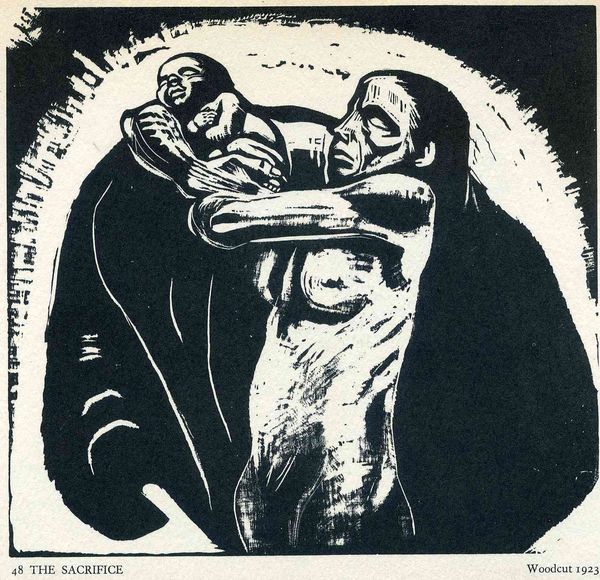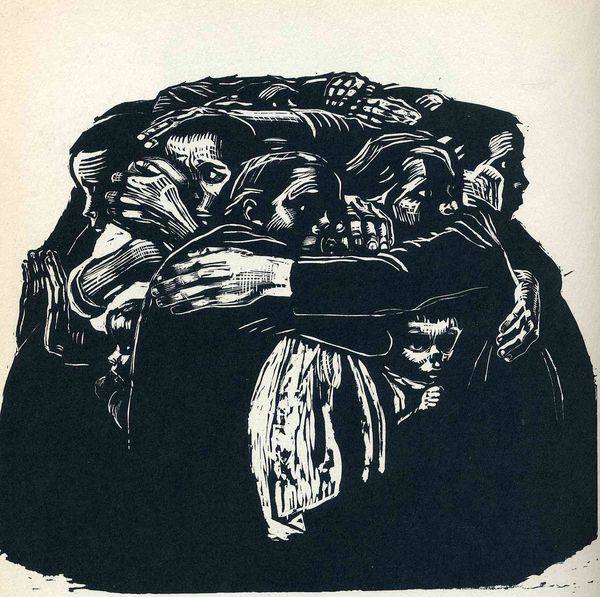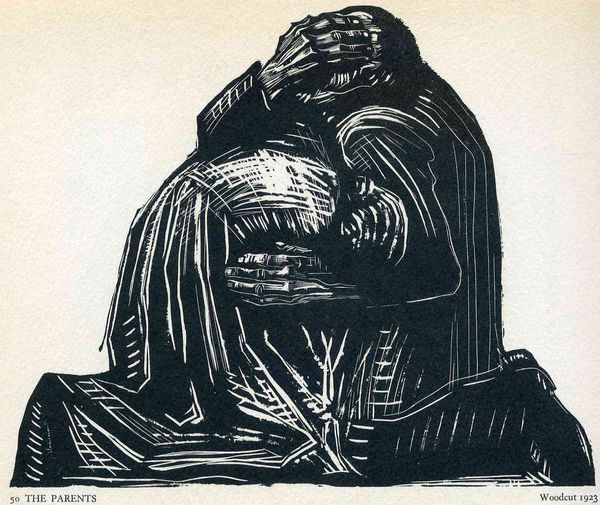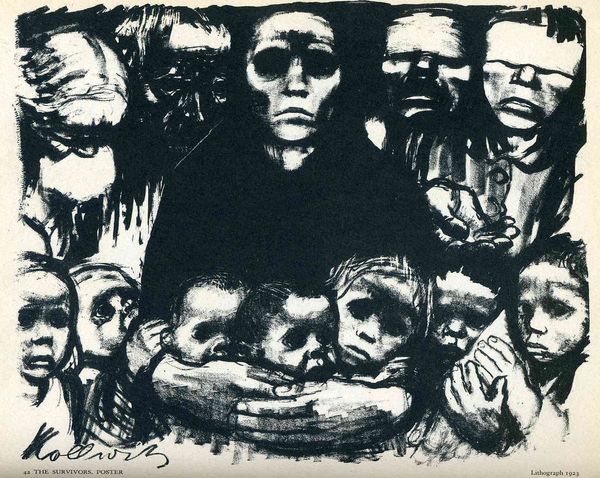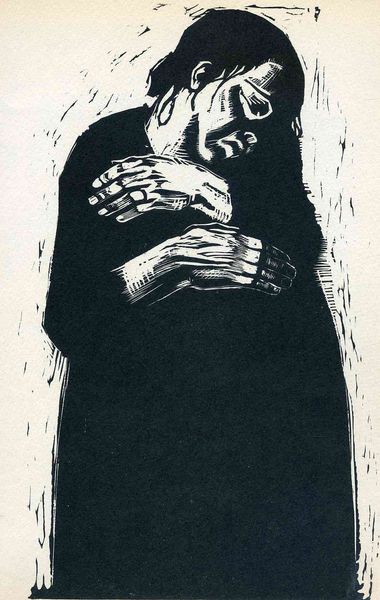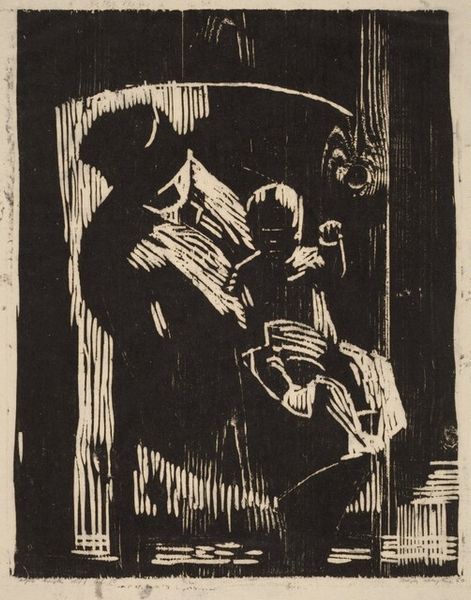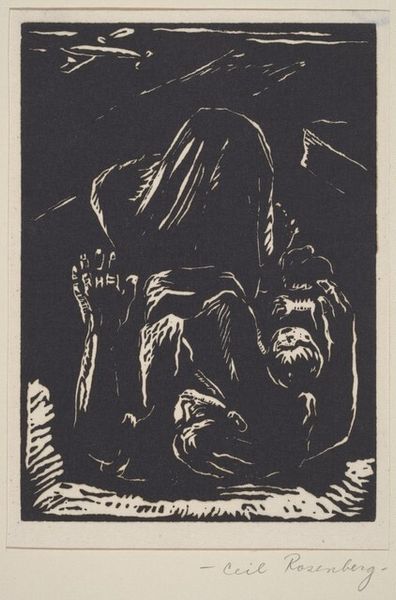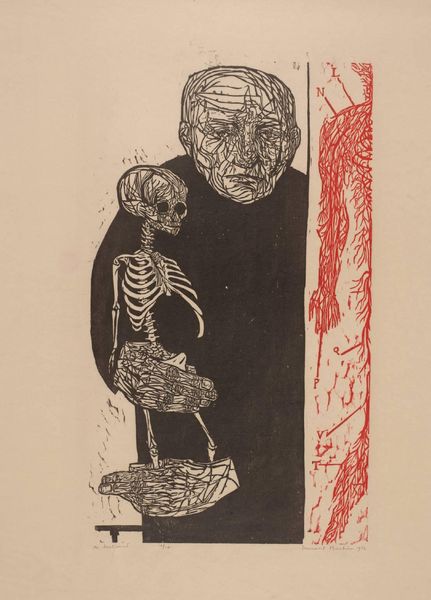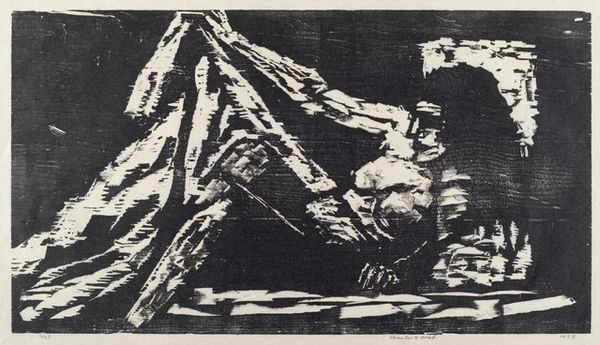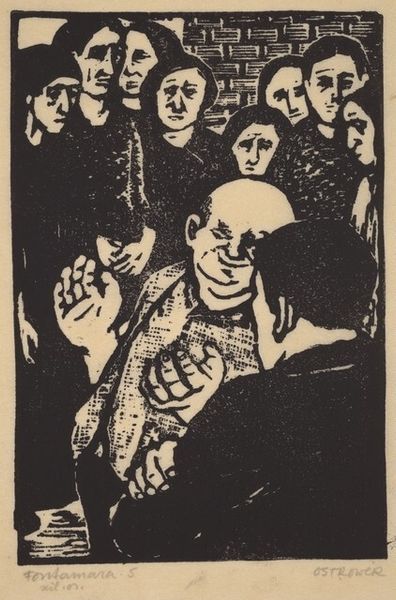
print, woodcut
#
mother
# print
#
death
#
caricature
#
caricature
#
german-expressionism
#
figuration
#
child
#
expressionism
#
woodcut
#
history-painting
Copyright: Public domain
Curator: This compelling woodcut, created in 1923, is titled "Hunger" by Käthe Kollwitz. It speaks volumes about the widespread suffering after World War I. Editor: The stark contrast between the black and white is so striking. There’s a rawness to it, an almost brutal directness. It looks like the image itself is etched with grief and desperation. Curator: Kollwitz’s work is deeply rooted in social consciousness. As a woman artist working during a time of immense social upheaval, her prints became powerful statements on war, poverty, and the human condition. Editor: It's fascinating how she manages to evoke such pathos through such a labor-intensive and unforgiving medium as woodcut. The grain of the wood, the force needed to carve it... It feels inherently connected to the struggles depicted, doesn't it? Curator: Absolutely. The subject matter--the skeletal figures, the despairing mother--these weren't abstract concepts for Kollwitz. She witnessed the impact of war and economic hardship firsthand within her community. The image functions as both an intimate portrayal of maternal suffering and a public statement against injustice. Editor: Looking closely, you can almost feel the physical effort and emotional weight transferred onto the block. It really challenges that hierarchy we often see in art, placing this "low" medium of printmaking right alongside traditionally "high" art forms as a powerful vehicle for expression. Curator: The work also carries broader artistic significance. Its visceral depiction of hardship aligned with the aims of the Neue Sachlichkeit movement and their unflinching approach to realism during the Weimar Republic. Editor: Knowing the physical and social context really transforms how you experience the piece. It is a somber meditation on hunger, created not just with ink and wood but through deep reserves of resilience and hard work. Curator: Indeed, Kollwitz's "Hunger" transcends mere artistic representation to become a lasting monument to human suffering and a powerful appeal for justice. Editor: Seeing it now, it’s a testament to art's potential to capture the human condition and fuel crucial conversations about equity.
Comments
No comments
Be the first to comment and join the conversation on the ultimate creative platform.
